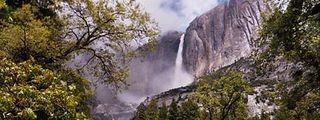
Yosemite at 120: The World's Oldest National Parks

Before the United States of America had been in existence for 100 years, it had a national park.
In 1872, telephones and radios had not been invented, yet Yellowstone National Park — the first of its kind in the world —was carved out of Wyoming, Montana and Idaho to preserve and protect the outdoors.
Along with Yosemite National Park, which turns 120 years old today (Oct. 1), these two iconic American spaces inspired an act of Congress that gave birth to the National Park Service, which hosted nearly 63 million visitors across all of the nation's parks last year. These earliest parks were set aside during a daring era of exploration, and while they are well charted today, not all of their mysterious features have been explained. [In Images: Yellowstone and Yosemite]
Great Reconnaissance
The period just before and during the Civil War was known as the Great Reconnaissance in Western exploration. Any scientist with a passion for discovery had the West as their outdoor laboratory, ripe for outback expeditions to collect exotic specimens and map and name amazing geological oddities. Explorers floated the Colorado River, discovered pterodactyl fossils, and began to poke around in the mysterious Yellowstone country.
One such explorer with a conservation bent was geologist Ferdinand Vandeveer Hayden. After an expedition to Yellowstone was cut short in northwestern Wyoming in 1860 — heavy snow blocked their path across Two Ocean Plateau near the Continental Divide — Hayden set out again in 1871, this time boosted by $40,000 from Uncle Sam.
Hayden and his expedition team, which included a military escort, packed their wagons and struck out from Ogden, Utah, to the Yellowstone region, a trip that would take almost two months and required improvisation. At one point, the explorers even built their own boat out of an oak tree near Yellowstone Lake. Later in the trip, an earthquake struck.
Sign up for the Live Science daily newsletter now
Get the world’s most fascinating discoveries delivered straight to your inbox.
Hayden made the most of his expedition, known as the Hayden Geological Survey of 1871. In his second letter from the area, Hayden detailed his progress in the Yellowstone wilderness:
". . . made a pretty careful examination of the Geyser region, Map of the whole region, Charts of the Springs and Geysers, with temperatures of each. Sketches, Photographs etc. I have made quite thorough soundings of the Lake, explored the north and west sides and will now move to the south and east sides. We are making a good topographical and geological map of the entire district."
Once Hayden returned from his mission, he successfully prodded Congress to set aside Yellowstone as a protected park.
Modern mysteries
Today's Yellowstone and Yosemite National Parks are living laboratories where scientists study the parks' unique geology.
Yellowstone sits in the crater formed by a supervolcano explosion 640,000 years ago. Today, scientists are working to understand what drives the regions' volcanic activity. The crater, called a caldera, has moved upward almost 3 inches (7.6 centimeters) each year between 2004 and 2008. Since 2009, the uplift has significantly slowed, but the movement of the caldera's floor is considered to be unpredictable. New research suggests that a plume of molten rock rising from deep underground may be the cause.
Also at Yellowstone, geoscientists recently discovered spires beneath Yellowstone Lake that are very similar to those seen above ground in other parts of the park. Scientists continue to explore how these spires formed — the leading idea is that hot water in a glacially dammed lake molded the rock projections.
This article was provided by OurAmazingPlanet, a sister site to LiveScience.
